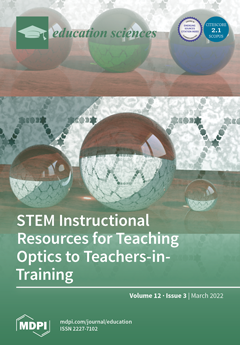Open AccessArticle
A Comprehensive Overview of Education during Three COVID-19 Pandemic Periods: Impact on Engineering Students in Sri Lanka
by
Gayanthi A. Ilangarathna, Yasiru Ranasinghe, Harshana Weligampola, Erandi Attygalla, Janaka Ekanayake, Sakunthala Yatigammana, Mallika Pinnawala, Roshan Godaliyadda, Vijitha Herath, Parakrama Ekanayake, Ganga Thilakaratne and Samath Dharmarathne
Cited by 5 | Viewed by 7072
Abstract
The COVID-19 pandemic has impacted the education system in Sri Lanka, similar to many countries in the world. As a result, the mode of education shifted from conventional face-to-face classes to online mode. The main objective of this study is to provide a
[...] Read more.
The COVID-19 pandemic has impacted the education system in Sri Lanka, similar to many countries in the world. As a result, the mode of education shifted from conventional face-to-face classes to online mode. The main objective of this study is to provide a comprehensive overview of the changes to the educational system due to the COVID-19 pandemic among engineering undergraduates of Sri Lanka over three identified pandemic periods. Quantitative descriptive analysis was used together with chi-square statistics to answer the research questions using the data collected through a google survey from engineering undergraduates in Sri Lanka. According to the results, students’ attendance in online classes has improved over time compared to the initial pandemic period. Nearly 50% of students’ family income has been impacted, either stopped or reduced due to the pandemic. Most students have issues regarding computing devices, internet connectivity, and the home environment. According to the chi-square statistics results, few of these issues had a statistically significant relationship between the family income; lower the income, higher the negative impact on students. More than half of the students felt isolated when studying at home during the pandemic. Still, more than 50% of students agreed that lecturers were well prepared to guide and deliver lessons remotely. The overall recommendations of the study are implementing workshops, training on new technologies, awareness programs for educational stakeholders, providing incentives to purchase digital devices, and improving internet connectivity to improve the new standard education system of Sri Lanka.
Full article
►▼
Show Figures





